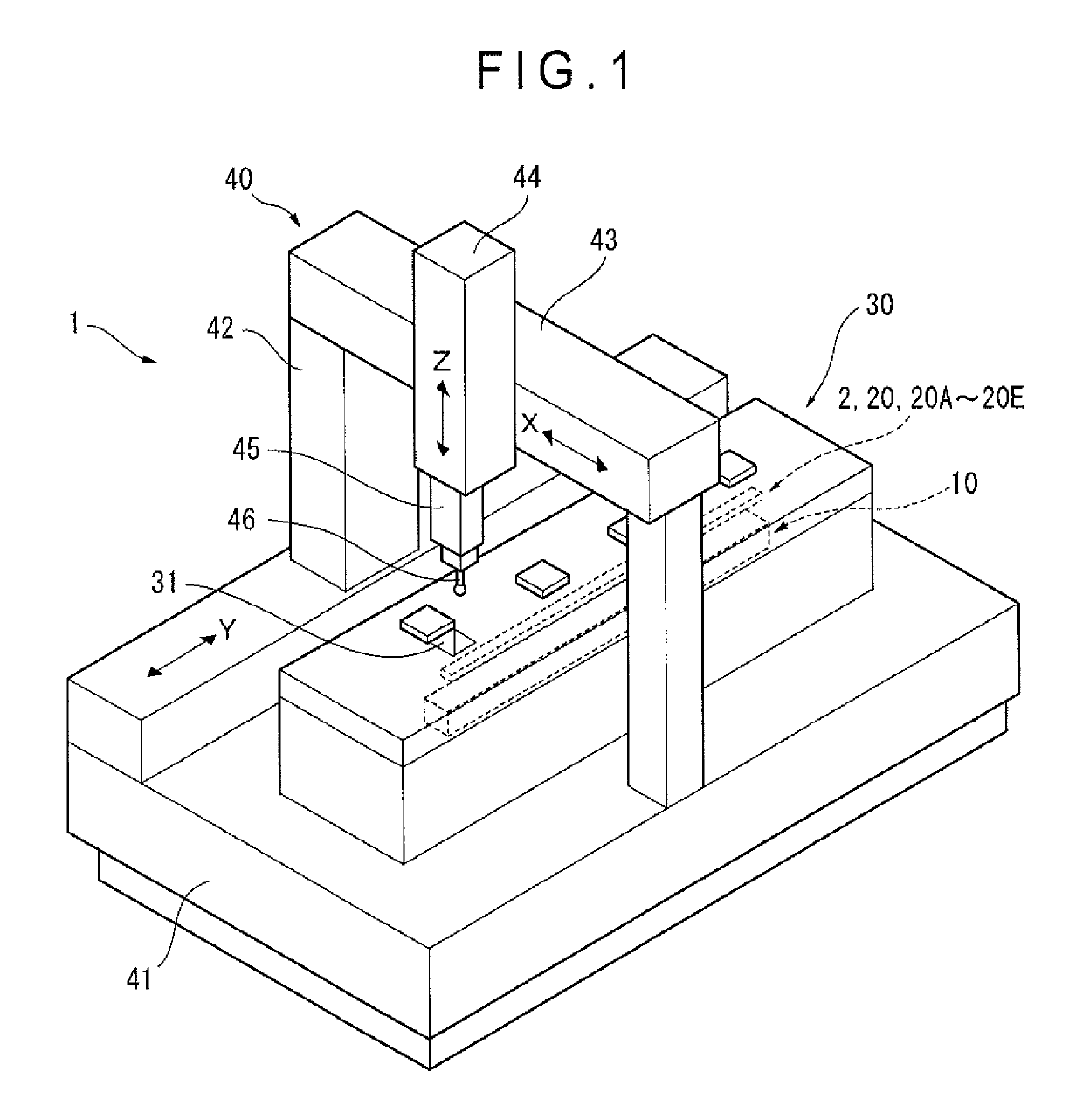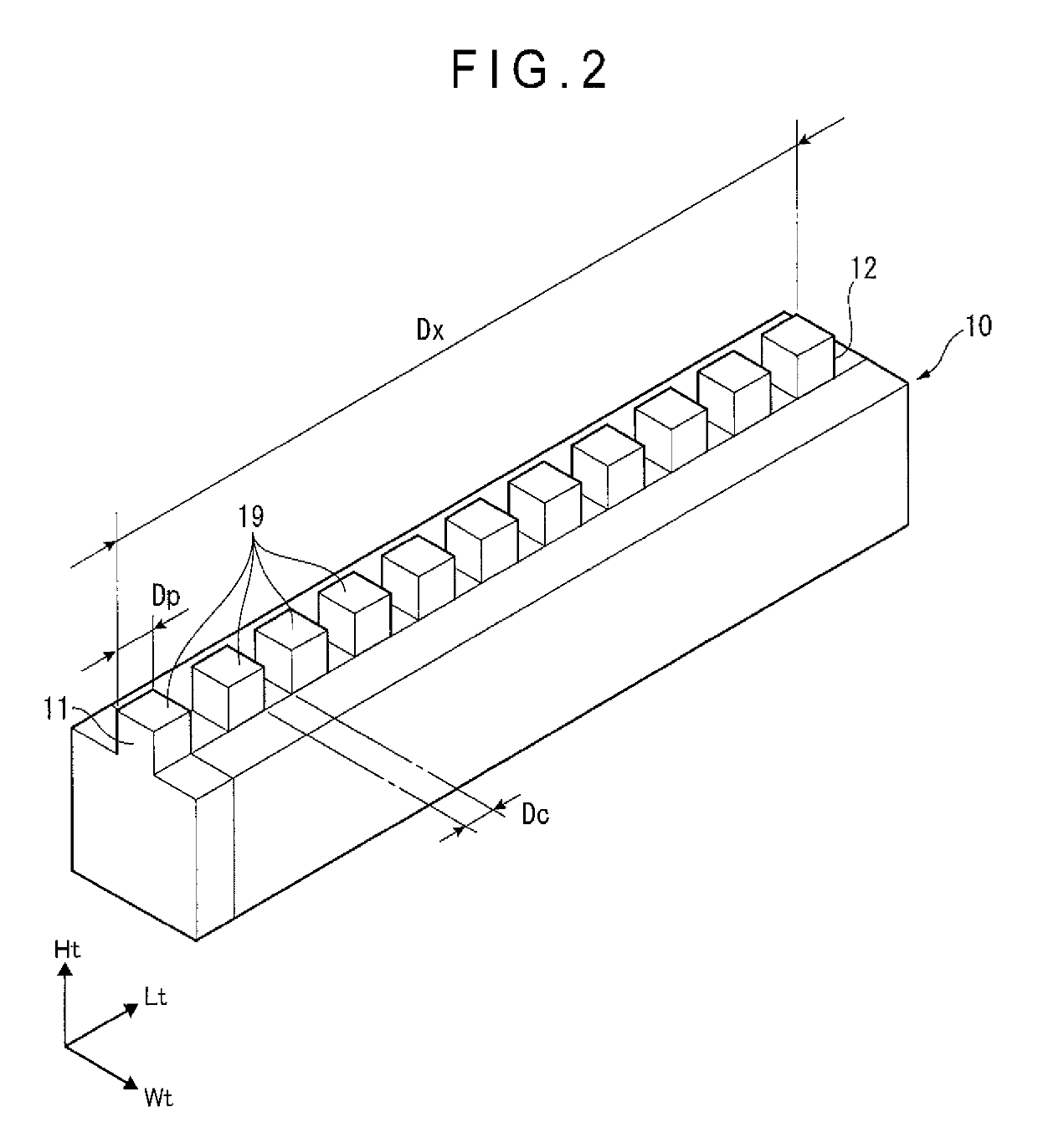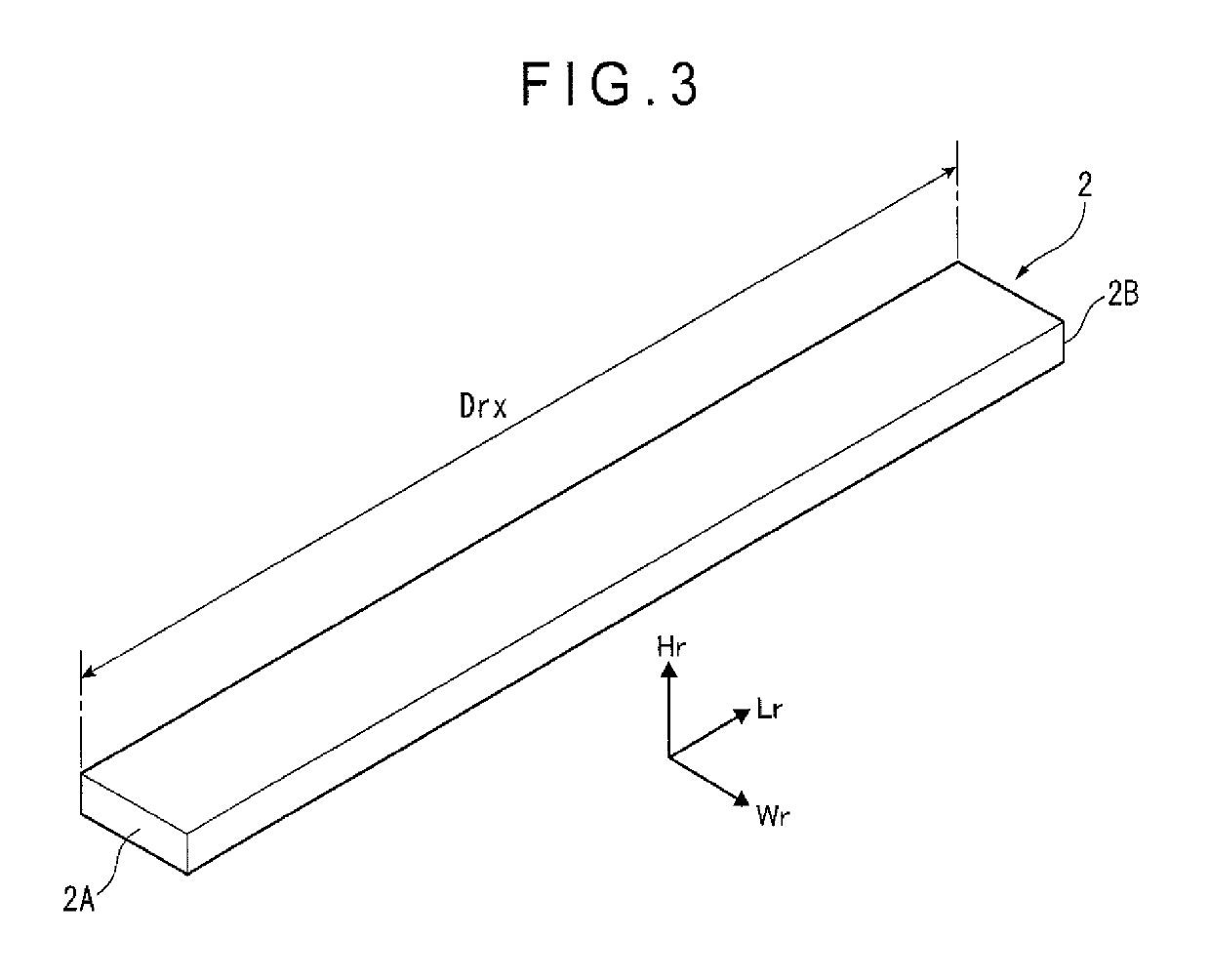Coefficient-of-thermal-expansion measurement method of dimension reference gauge, measuring device for coefficient of thermal expansion and reference gauge
a measurement method and thermoelectric expansion technology, applied in the direction of measurement devices, mechanical measuring arrangements, instruments, etc., can solve the problems of high cost of the entire system, high cost of the optical interferometer per se, and high cost of the optical interferometer, so as to achieve high accuracy and inexpensive measurement
- Summary
- Abstract
- Description
- Claims
- Application Information
AI Technical Summary
Benefits of technology
Problems solved by technology
Method used
Image
Examples
first exemplary embodiment
Advantages of First Exemplary Embodiment
[0254]The above-described first exemplary embodiment offers the following advantages.
[0255]Since the length of the step gauge 10 (measurement target) is measured using the coordinate measuring machine 40, the CTE of the step gauge 10 having various lengths can be highly accurately measured without using an expensive optical interferometer.
[0256]Further, in the first exemplary embodiment, the reference gauge block 2 is used as a length master and the relative measurement of the length with respect to the reference gauge block 2 is performed in measuring the length of the step gauge 10 using the coordinate measuring machine 40. Accordingly, the results of the length measurement are not dependent on the accuracy of the scale of the coordinate measuring machine 40 but are solely dependent on the accuracy of the reference gauge block 2. Thus, high accuracy of the measurement results can be ensured even when the length of the step gauge 10 is increa...
second exemplary embodiment
[0269]FIG. 13 shows a second exemplary embodiment of the invention.
[0270]In the above-described first exemplary embodiment, the conical hole 619 and the V-shaped groove 628 are directly formed on the lower face of the reference gauge block 2 in order to support the reference gauge block 2 using the first reference gauge support base 61 and the second reference gauge support base 62.
[0271]In contrast, support adapters 71, 72 are attached to the reference gauge block 2 in the second exemplary embodiment as shown in FIG. 3 and the conical hole 619 and the V-shaped groove 628 are formed on the lower faces of the support adapters 71, 72.
[0272]It should be noted that the arrangement of the second exemplary embodiment is the same as the above-described first exemplary embodiment except for the support arrangement of the reference gauge block 2 and duplicated description will be omitted. Only the difference will be described below.
[0273]It should further be noted that, though the support ad...
third exemplary embodiment
[0280]FIGS. 14 and 15 show a third exemplary embodiment of the invention.
[0281]In the above-described first exemplary embodiment, the measurement aperture 31 for introducing the probe 46 is provided on the upper face of the temperature-controlled chamber 30 and the protrusions 19 are provided to the upper face of the step gauge 10 (i.e. at the side facing the measurement apertures 31) and the reference gauge block 2 is provided in parallel to and above the step gauge 10 inside the temperature-controlled chamber 30.
[0282]In contrast, as shown in FIGS. 14 and 15, measurement apertures 31A into which the probe 46 is configured to be introduced are provided on one of lateral faces of the temperature-controlled chamber 30A, the step gauge 10 is disposed along the one of the lateral faces and the reference gauge block 2 is disposed between the one of the lateral faces and the step gauge 10 in parallel to each other.
[0283]The third exemplary embodiment offers the same advantages as those m...
PUM
| Property | Measurement | Unit |
|---|---|---|
| length | aaaaa | aaaaa |
| length | aaaaa | aaaaa |
| length | aaaaa | aaaaa |
Abstract
Description
Claims
Application Information
 Login to View More
Login to View More - R&D
- Intellectual Property
- Life Sciences
- Materials
- Tech Scout
- Unparalleled Data Quality
- Higher Quality Content
- 60% Fewer Hallucinations
Browse by: Latest US Patents, China's latest patents, Technical Efficacy Thesaurus, Application Domain, Technology Topic, Popular Technical Reports.
© 2025 PatSnap. All rights reserved.Legal|Privacy policy|Modern Slavery Act Transparency Statement|Sitemap|About US| Contact US: help@patsnap.com



